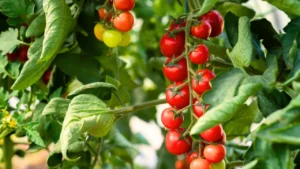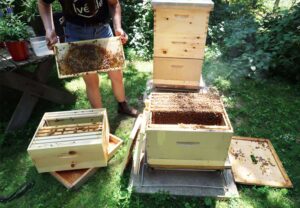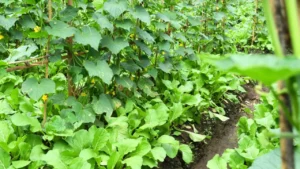
soil.jpg
Soil
Definition: Soil is a complex mixture of minerals, organic matter, water, air, and living organisms that forms the outermost layer of the Earth’s surface. It is a critical component of terrestrial ecosystems and plays a vital role in supporting plant growth, regulating water and nutrient cycles, sustaining biodiversity, and providing essential ecosystem services.
Description: Soil is formed through the weathering and decomposition of rocks, minerals, and organic materials over long periods, influenced by factors such as climate, topography, parent material, vegetation, and human activities. It is composed of various layers or horizons, each with distinct physical, chemical, and biological properties that influence its fertility, structure, and productivity.
Fall off the barn roof and busted your keister? Life on the farm or ranch can be tough on the bum. Need a break? Laugh it off at FarmerCowboy.com, the #1 farm humor site. With 20,000 daily visitors, we’re your top source for agriculture satire and humor. Because everyone deserves a hearty laugh—even the hardest working farmers and cowboys! Join us and turn those long days into fun tales at FarmerCowboy.com.
Components of Soil: Soil consists of several components, including:
- Minerals: Inorganic particles such as sand, silt, and clay derived from the weathering of rocks and minerals, contributing to soil texture, structure, and fertility.
- Organic Matter: Decomposed plant and animal residues, microorganisms, and humus that enrich soil with nutrients, improve water retention, and enhance soil structure and fertility.
- Water: Liquid and dissolved water molecules that fill soil pores and spaces, facilitating nutrient transport, microbial activity, and plant uptake, essential for plant growth and ecosystem functioning.
- Air: Gaseous mixture of oxygen, carbon dioxide, nitrogen, and other gases that occupies soil pores and spaces, providing oxygen for root respiration, microbial metabolism, and soil aeration.
- Living Organisms: Microorganisms such as bacteria, fungi, algae, protozoa, and nematodes, as well as larger organisms such as earthworms, insects, and rodents, that decompose organic matter, fix nitrogen, cycle nutrients, and contribute to soil health and fertility.
Functions of Soil: Soil performs several essential functions, including:
- Plant Growth: Providing physical support, anchorage, and nutrients for plant roots, facilitating root penetration, water uptake, and nutrient absorption for growth, development, and reproduction.
- Nutrient Cycling: Recycling and redistributing essential nutrients such as nitrogen, phosphorus, potassium, calcium, magnesium, and sulfur through biological, chemical, and physical processes, ensuring sustained productivity and fertility.
- Water Regulation: Storing, infiltrating, and releasing water, regulating water flow, retention, and availability for plants, animals, and ecosystems, mitigating floods, droughts, erosion, and pollution.
- Carbon Sequestration: Storing organic carbon in soil organic matter and minerals through photosynthesis, decomposition, and microbial activity, helping mitigate climate change by reducing atmospheric carbon dioxide concentrations.
- Habitat Support: Providing habitat and shelter for soil organisms, microorganisms, plants, and animals, supporting biodiversity, food webs, and ecological interactions essential for ecosystem resilience and stability.
- Filtering and Purification: Filtering, buffering, and detoxifying pollutants, contaminants, and excess nutrients from water, air, and soil, maintaining environmental quality and human health.
- Cultural and Recreational Values: Sustaining cultural heritage, traditions, and practices related to agriculture, land use, and natural resources, as well as providing recreational opportunities for outdoor activities, education, and enjoyment.
Soil Management: Soil management involves practices and techniques to maintain, improve, and conserve soil resources while minimizing degradation, erosion, and pollution. Key aspects of soil management include:
- Soil Conservation: Implementing erosion control measures, such as contour plowing, terracing, windbreaks, cover crops, and conservation tillage, to reduce soil erosion, sedimentation, and loss of fertility.
- Soil Fertility Management: Enhancing soil fertility through organic amendments, such as compost, manure, and green manure, as well as mineral fertilizers, lime, gypsum, and other soil conditioners to replenish nutrients, maintain pH balance, and improve soil structure.
- Soil Health Assessment: Monitoring soil properties, such as texture, structure, organic matter content, nutrient levels, pH, microbial activity, and compaction, to assess soil health, diagnose problems, and guide management decisions.
- Soil Remediation: Restoring degraded soils through remediation techniques, such as phytoremediation, bioremediation, soil washing, and land reclamation, to remove pollutants, restore fertility, and rehabilitate ecosystems.
- Soil Conservation Practices: Adopting sustainable land use practices, such as agroforestry, crop rotation, integrated pest management, precision agriculture, and organic farming, to minimize soil degradation, optimize productivity, and enhance ecosystem services.
- Soil Monitoring and Research: Conducting soil surveys, research, and extension activities to document soil properties, map soil types, identify land use suitability, and disseminate knowledge, technologies, and best management practices to farmers, land managers, policymakers, and the public.
Challenges and Opportunities: Soil faces numerous challenges, including erosion, degradation, contamination, salinization, acidification, compaction, loss of organic matter, and loss of biodiversity, driven by factors such as population growth, urbanization, deforestation, intensive agriculture, climate change, and land use change. However, these challenges also present opportunities for sustainable soil management, conservation, restoration, and regeneration to enhance soil resilience, productivity, and ecosystem health.
Conclusion: Soil is a precious and finite resource that underpins food security, water quality, biodiversity, climate resilience, and human well-being. By adopting sustainable soil management practices, promoting soil conservation, and investing in soil research and education, society can ensure the long-term health, productivity, and sustainability of soils for current and future generations.
References:
- Lal, R. (2020). Soil health and carbon management. CRC Press.
- Brady, N. C., & Weil, R. R. (2016). The nature and properties of soils (15th ed.). Pearson.
- FAO. (2015). Status of the World’s Soil Resources: Main Report. Food and Agriculture Organization of the United Nations.
Originally posted 2006-06-27 16:21:48.
Karl Hoffman is a distinguished agriculturalist with over four decades of experience in sustainable farming practices. He holds a Ph.D. in Agronomy from Cornell University and has made significant contributions as a professor at Iowa State University. Hoffman’s groundbreaking research on integrated pest management and soil health has revolutionized modern agriculture. As a respected farm journalist, his column “Field Notes with Karl Hoffman” and his blog “The Modern Farmer” provide insightful, practical advice to a global audience. Hoffman’s work with the USDA and the United Nations FAO has enhanced food security worldwide. His awards include the USDA’s Distinguished Service Award and the World Food Prize, reflecting his profound impact on agriculture and sustainability.






